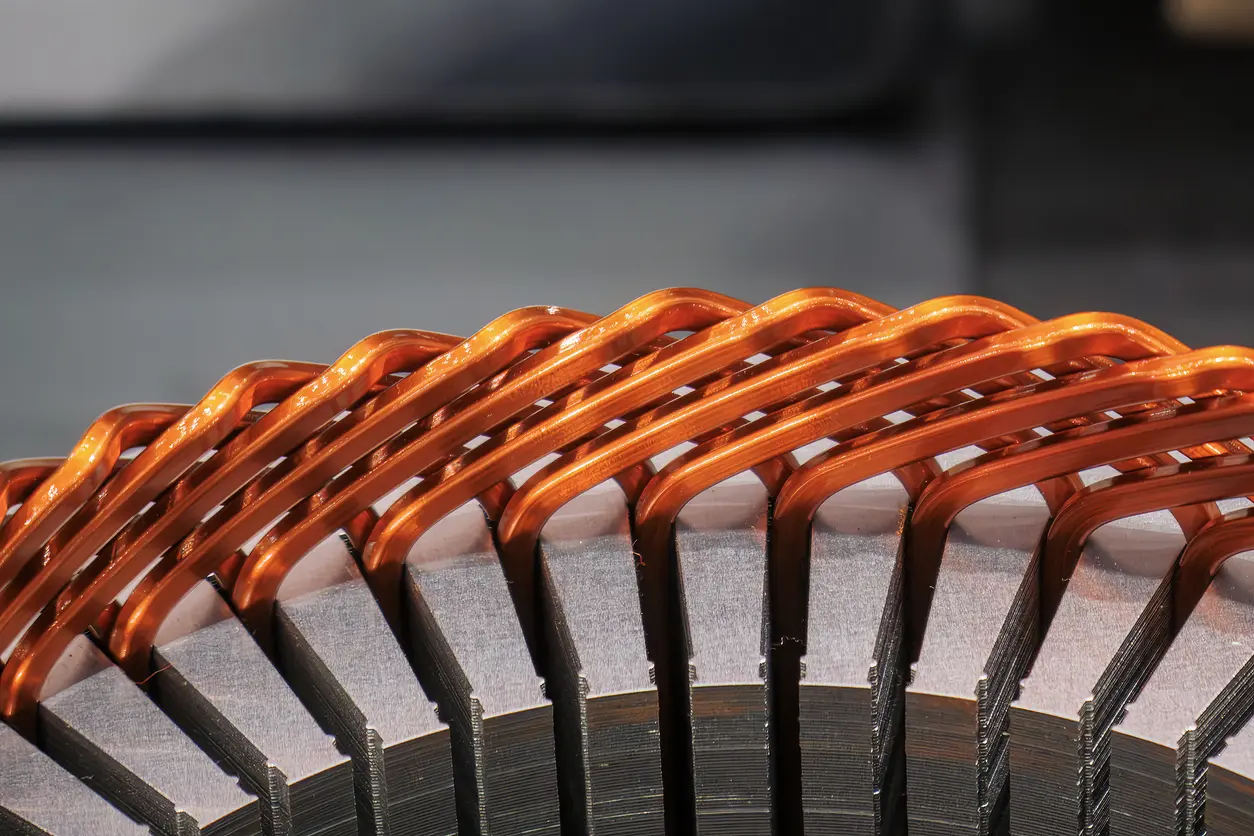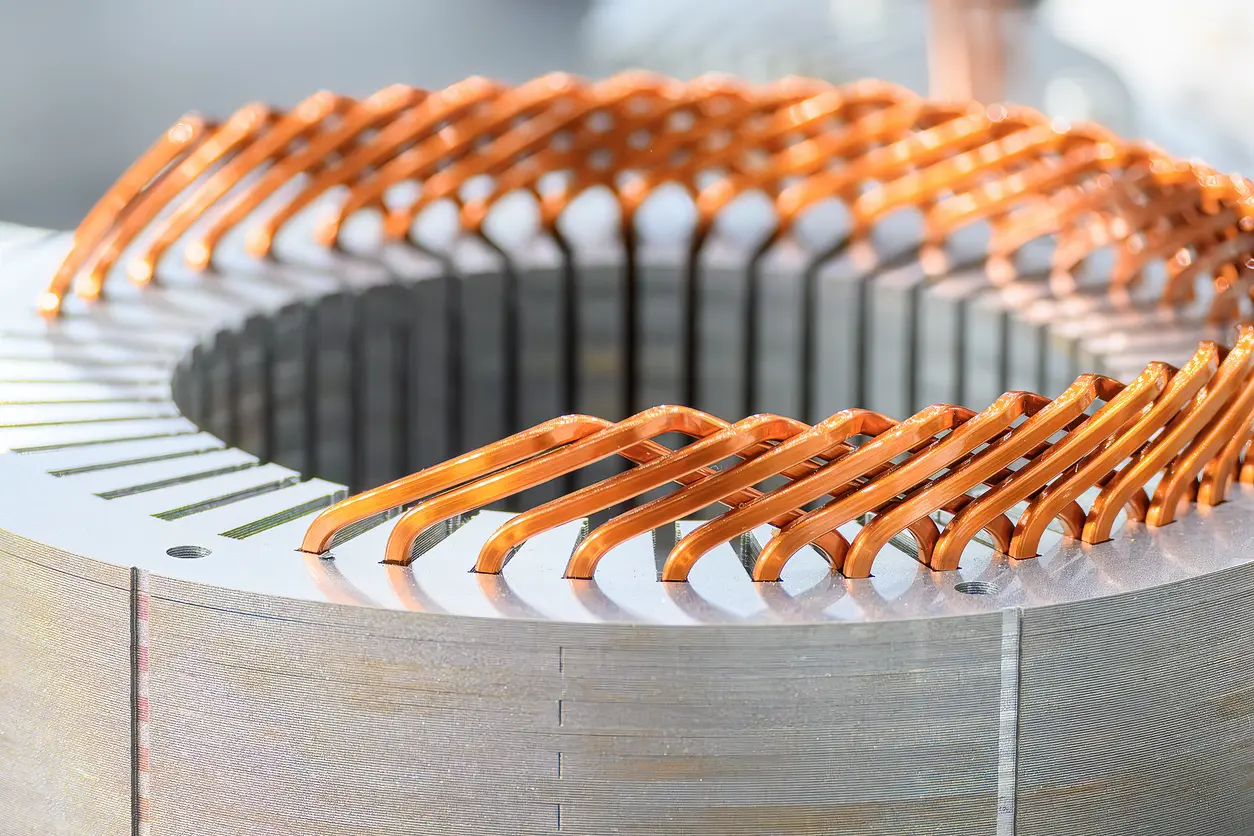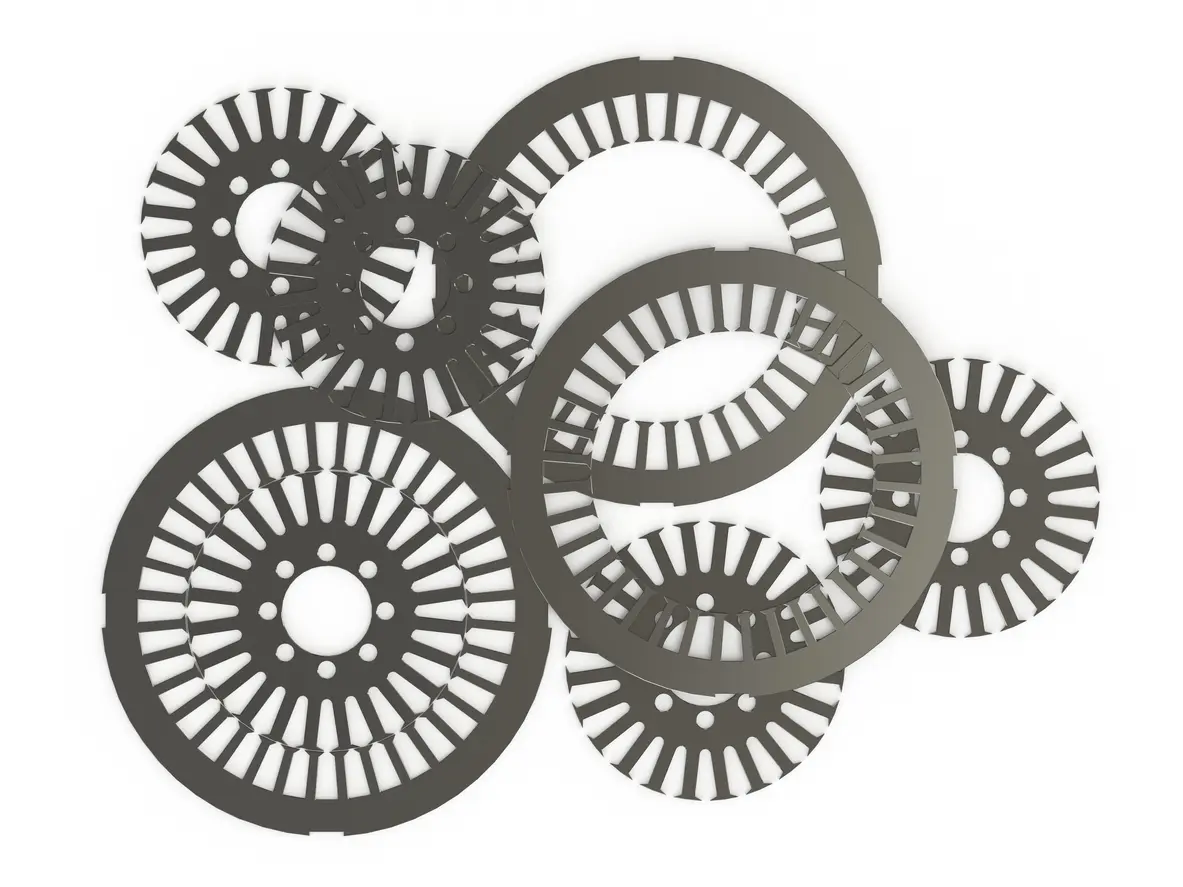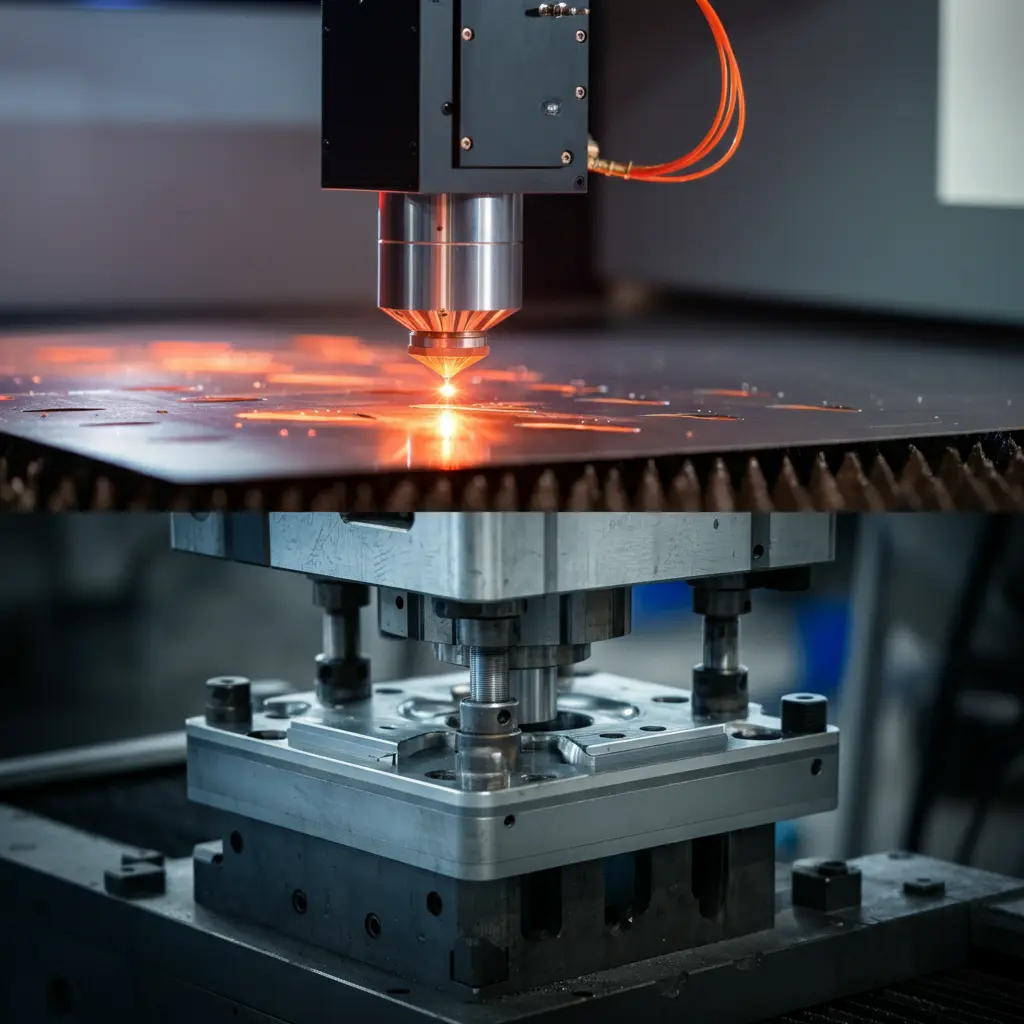Table of Contents
Introduction
In electric motor manufacturing, self-bonding lamination represents a revolutionary assembly method that’s transforming how high-performance motor cores are produced. This technology applies a specialized adhesive coating to electrical steel laminations, which activates under controlled heat and pressure to create a continuous bond throughout the entire core stack—preserving the steel’s electromagnetic properties while ensuring structural integrity.
For decades, the industry standard has been TIG (Tungsten Inert Gas) welding with argon gas protection, typically applied along the stator core’s outer edges. While effective, this conventional method creates localized heat-affected zones at discrete weld points, potentially degrading magnetic properties and introducing mechanical stresses that compromise motor performance.
The shift to self-bonding lamination addresses these fundamental limitations while meeting the demanding requirements of modern EV applications. As manufacturers pursue higher efficiency, reduced noise, and improved power density, this advanced bonding method delivers measurable advantages that traditional welding simply cannot match.
This transformation is driven by five game-changing advantages that establish self-bonding lamination as the superior choice for next-generation motor manufacturing: retained electromagnetic performances, enhanced structural integrity, noise reduction, streamlined production processes, and design flexibility.
The 5 Game-Changing Advantages
1. Retains Electromagnetic Performances
Traditional TIG welding fundamentally compromises motor electromagnetic performance through unavoidable physical alterations to the lamination stack. When welding heat is applied along the stator edges, it creates localized mechanical distortion that warps the carefully engineered geometry of the electrical steel laminations. This distortion disrupts the designed magnetic flux paths, forcing the magnetic field to travel through less optimal routes within the core structure.
More critically, the fused welding path along the lamination edges creates a continuous electrical connection between layers—precisely what lamination technology aims to prevent. This welded region becomes a highway for eddy currents, generating parasitic electrical loops that circulate through the welding seam rather than contributing to useful motor operation. These unwanted currents manifest as additional iron losses concentrated in the weld-affected zones.
The impact on motor efficiency is substantial. Every watt lost to eddy currents in the welding regions represents energy that cannot be transformed into mechanical output. In high-performance EV applications where every percentage point of efficiency translates to extended driving range, these welding-induced losses become increasingly unacceptable. Self-bonding lamination eliminates these concerns entirely by maintaining complete electrical isolation between layers while providing the necessary mechanical strength through its adhesive bond, preserving the electromagnetic integrity that motor designers intended.
2. Enhanced Structural Integrity Without Compromise
The self-bonding lamination method achieves a bonding strength of 3 MPa across the entire core structure, demonstrating that advanced adhesive technology can match the mechanical performance traditionally associated with welding. This bonding strength ensures the lamination stack maintains its structural integrity under the demanding operational conditions of modern electric motors, including high rotational speeds and temperature cycling.
Unlike welding’s localized bond points, self-bonding distributes this 3 MPa strength uniformly throughout every layer interface. This comprehensive bonding approach eliminates stress concentration points while maintaining the robust mechanical properties required for automotive applications. The continuous adhesive layer creates a monolithic structure that resists delamination and maintains dimensional stability throughout the motor’s service life.
By achieving comparable bonding strength to traditional welding methods, self-bonding lamination proves that manufacturers need not compromise structural integrity when transitioning away from TIG welding. The technology delivers equivalent mechanical performance while avoiding welding’s inherent drawbacks, making it an ideal solution for high-performance EV motor cores.
3. Noise reduction
By eliminating discrete welding paths on the stator, self-bonding lamination creates a more evenly distributed structural integrity that significantly reduces operational noise. Traditional welding creates rigid connection points interspersed with unbonded areas, leading to uneven vibration patterns and resonance during motor operation. These inconsistencies amplify acoustic emissions, particularly at specific frequencies that can create unpleasant harmonic noise in EV applications.
While welding methods are typically not applied to motor rotors, the wound stator plays a crucial role in overall motor acoustics. The continuous adhesive bond in self-bonding technology creates a uniformly damped core structure that absorbs and dissipates vibrations rather than transmitting them. This even distribution of bonding throughout the stator laminations acts as an integrated dampening system.
The result is a notably quieter motor operation of around 30dB—a critical advantage for electric vehicles where the absence of engine noise makes any motor whine or vibration immediately noticeable to passengers. The uniform core structure achieved through self-bonding lamination delivers the acoustic refinement expected in premium EV applications.
4. Streamlined Production Processes
Conventional motor core manufacturing involves multiple discrete steps that fragment the production flow. After stator or rotor laminations are produced through the progressive die stamping process, the stacked cores must be manually transported to a separate welding station. This material handling introduces inefficiencies, increases labor costs, and creates opportunities for damage or contamination between processes. The welding operation itself requires additional setup time, skilled operators, and quality inspection procedures.
The self-bonding lamination method revolutionizes this workflow through integrated processing. Engineers are developing innovative production lines where the heating and cooling cycles required for self-bonding lamination activation occur directly within the stamping die system. This in-die bonding eliminates the entire secondary operation, transforming what was once a multi-station process into a single, continuous operation.
This streamlined approach with self-bonding lamination reduces production time, minimizes work-in-process inventory, and eliminates the labor associated with inter-station transport. By consolidating stamping and bonding into one automated sequence, manufacturers achieve higher throughput rates while maintaining consistent quality. The result is a leaner, more efficient production process that aligns perfectly with the high-volume demands of EV motor manufacturing, making self-bonding lamination increasingly attractive for mass production scenarios.
5. Design Flexibility
By eliminating the need for designated welding paths on lamination cores, self-bonding lamination liberates motor designers from traditional manufacturing constraints. Conventional welding requires specific access points and clearances for welding equipment, forcing designers to compromise optimal electromagnetic designs to accommodate these manufacturing necessities. With self-bonding technology, engineers can focus purely on performance optimization without worrying about weld path accessibility or placement.
Additionally, self-bonding lamination significantly improves the accuracy of computer-aided design processes. Finite Element Analysis (FEA) simulation software typically struggles to predict the real-world impact of welding-induced variables such as heat-affected zones, residual stresses, and localized material property changes. These unpredictable factors often create discrepancies between simulated and actual motor performance.
With the uniform bonding characteristics of self-bonding lamination, FEA predictions become remarkably more reliable. Designers can trust their simulation results, reducing the need for multiple prototype iterations and accelerating development cycles. This enhanced predictability, combined with newfound geometric freedom, enables the creation of innovative motor architectures that push the boundaries of power density and efficiency in EV applications.
Conclusion
The transition from traditional TIG welding to self-bonding lamination represents a fundamental shift in motor core manufacturing philosophy. Through retained electromagnetic performances, enhanced structural integrity with 3 MPa bonding strength, significant noise reduction, streamlined production processes, and unprecedented design flexibility, this technology addresses every limitation of conventional welding methods while introducing new advantages.
For EV manufacturers facing increasing pressure to improve efficiency, reduce production costs, and enhance vehicle refinement, self-bonding lamination offers a proven path forward. The technology’s ability to preserve electromagnetic properties while simplifying manufacturing makes it particularly valuable for high-volume EV motor production where every percentage of efficiency and every decibel of noise reduction matters.
As the automotive industry accelerates toward electrification, manufacturing methods must evolve to meet new challenges. Self-bonding lamination isn’t just an incremental improvement—it’s a transformative technology that enables the next generation of high-performance electric motors. Forward-thinking manufacturers who embrace this innovation today position themselves to lead tomorrow’s competitive EV market.





